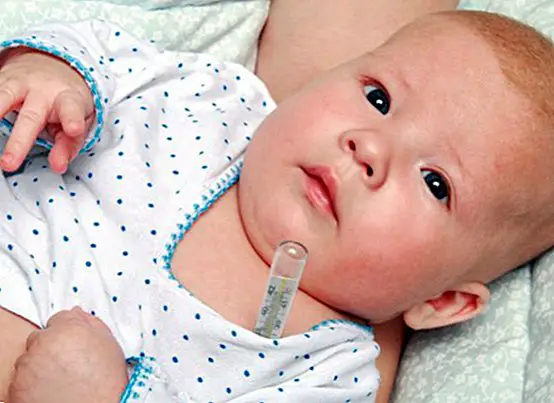Bronchiolitis in 1 and 2 month old babies: all you have to know
The health of our children is a subject that gives us many headaches, especially if they are in the growth stage. And if we talk about babies, the worry is greater because we find ourselves with an extremely vulnerable being.
It is precisely this condition that puts you at risk of suffering a host of diseases, so we must be alert to know how to react to certain stimuli or if you complain too much for some unknown reason.

What is bronchiolitis?
Maybe you've never heard of the bronchiolitis, a disease that causes the inflammation of your baby's small bronchi and that has negative repercussions on the intricate network of channels that holds the trachea together with the lungs.
This causes this system to divide, weaken the bronchi and convert them into thin channels, which eventually become the so-called "bronchioles". It is there where an exchange between pure air and polluted air is generated.
That is, there is a clash between the pure oxygen that is drawn from the air with the carbon dioxide that should be released by the breathing process and the work that the respiratory system naturally performs.
This condition can commonly be confused with a simple cold due to the presence of coughs and mucus. However, it is a much more complex condition that will eventually lead to complications at the respiratory level.
What are your symptoms?
The first symptoms can occur quite aggressively for two or three days, but you have to be very close with the specialist to precisely differentiate this from a simple cold, and be able to attack it.
However, we can summarize below what its main symptoms are:
- Shortness of breath, whistling or wheezing when breathing and agitated breathing.
- The baby's ribs seem to sink when the child tries to inhale.
- Convulsive cough.
- Fatigue.
- Bluish skin as a result of lack of oxygen.
- Opening of nostrils in babies.

Some scientific studies associate Bronchiolitis with breastfeeding. That is to say, babies who have not been exclusively fed with milk from the mother are at greater risk of suffering from this terrible disease.
There are times of the year in which the disease occurs more easily, especially during the winter and when the spring is just beginning. In fact, it is believed that 70% of babies who are breastfeeding may suffer.
There are several types of Bronchiolitis ...
It is common to find two types of bronchiolitis. On the one hand we must mention the viral bronchiolitis, the most common and the one that mostly appears in babies.
On the other hand we find the bronchitis obliterans, rare and dangerous disease in adults in which healing (and not inflammation) is the culprit of blocking the air passages, causing the closure of the affected part of the lung.

And how is it treated?
The first thing to keep in mind is that the baby should have control with his pediatrician. The specialist is the one who will have the final word on the treatment and some additional suggestions.
The administration of drugs that dilate the bronchi is the most common, especially if it is a Bronchiolitis of bacterial origin. This medication is prescribed for seven or ten days.
When the disease is water, the intake of liquids will favor the condition impressively. This is because in that way the mucus flow is improved, therefore its expulsion and better breathing.

Essential oils such as eucalyptus, frankincense, marjoram, sandalwood or thyme are very useful for the natural treatment of Bronchiolitis. Simply put these oils to heat in water and inhale their vapors.
Do not administer cough syrup if you are in the presence of Bronchiolitis. This is because coughing is a natural reaction of the body that seeks to expel mucus. Eliminating this symptom would result in letting phlegm build up. This article is published for informational purposes only. You can not and should not replace the consultation with a Pediatrician. We advise you to consult your trusted pediatrician. ThemesDiseases in babies and children



